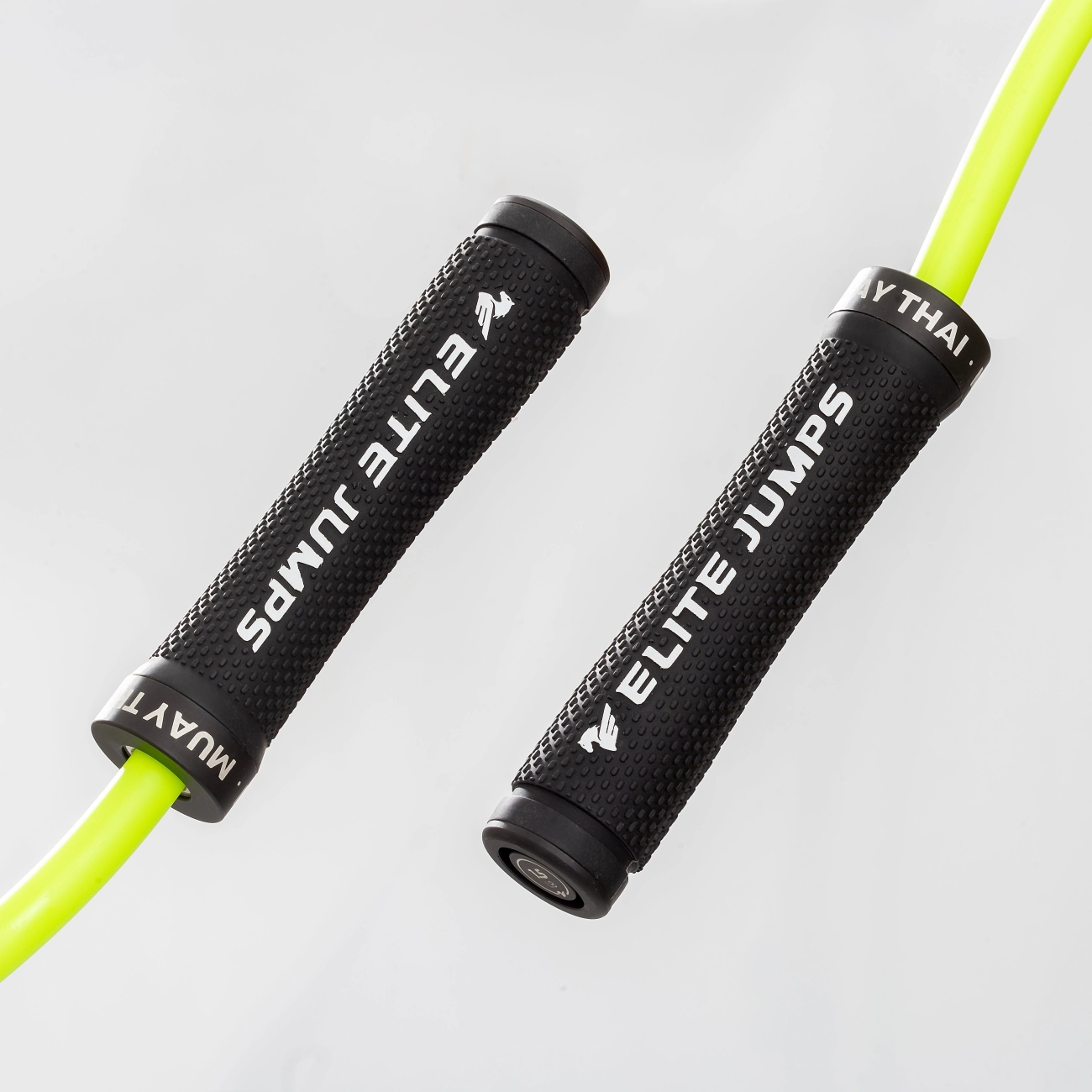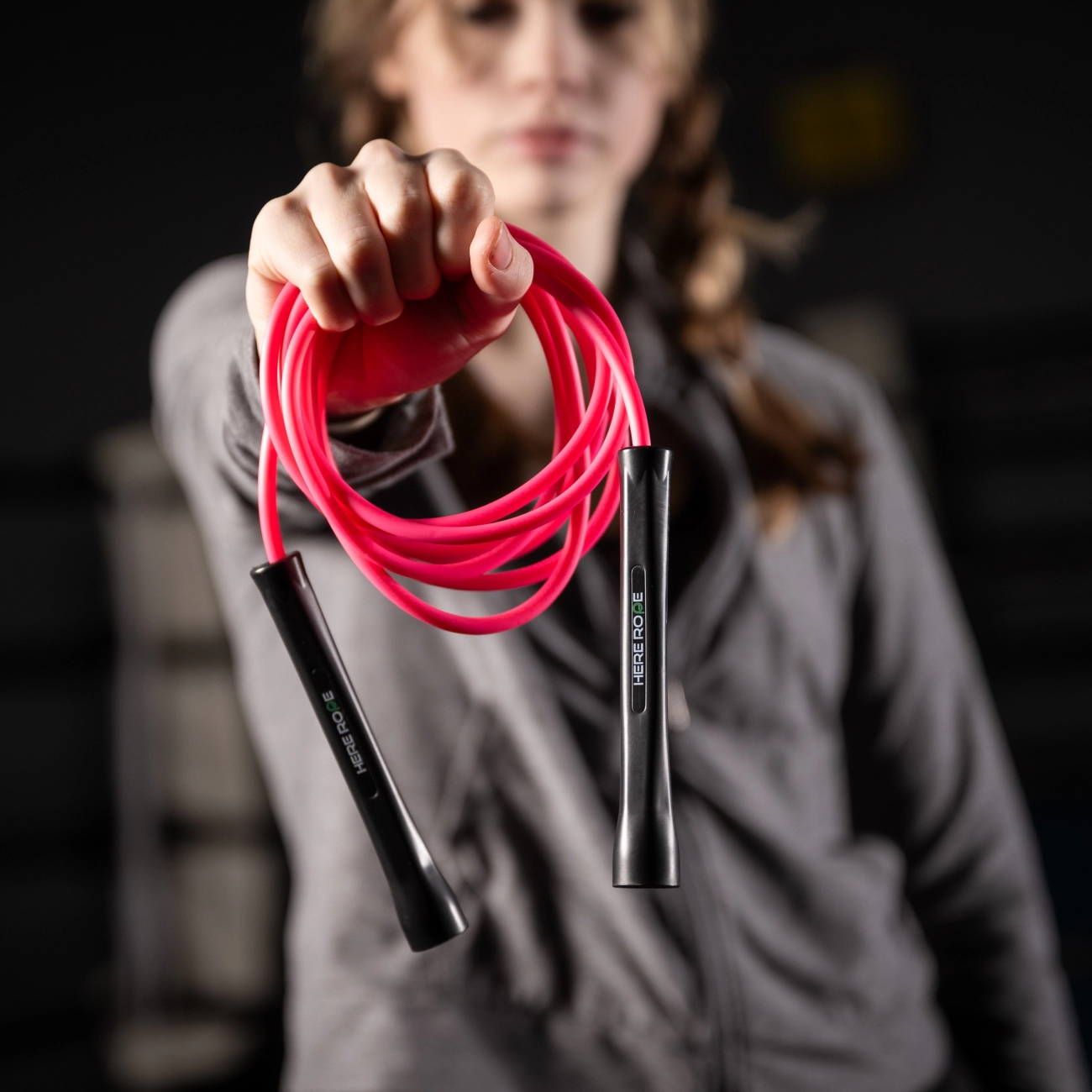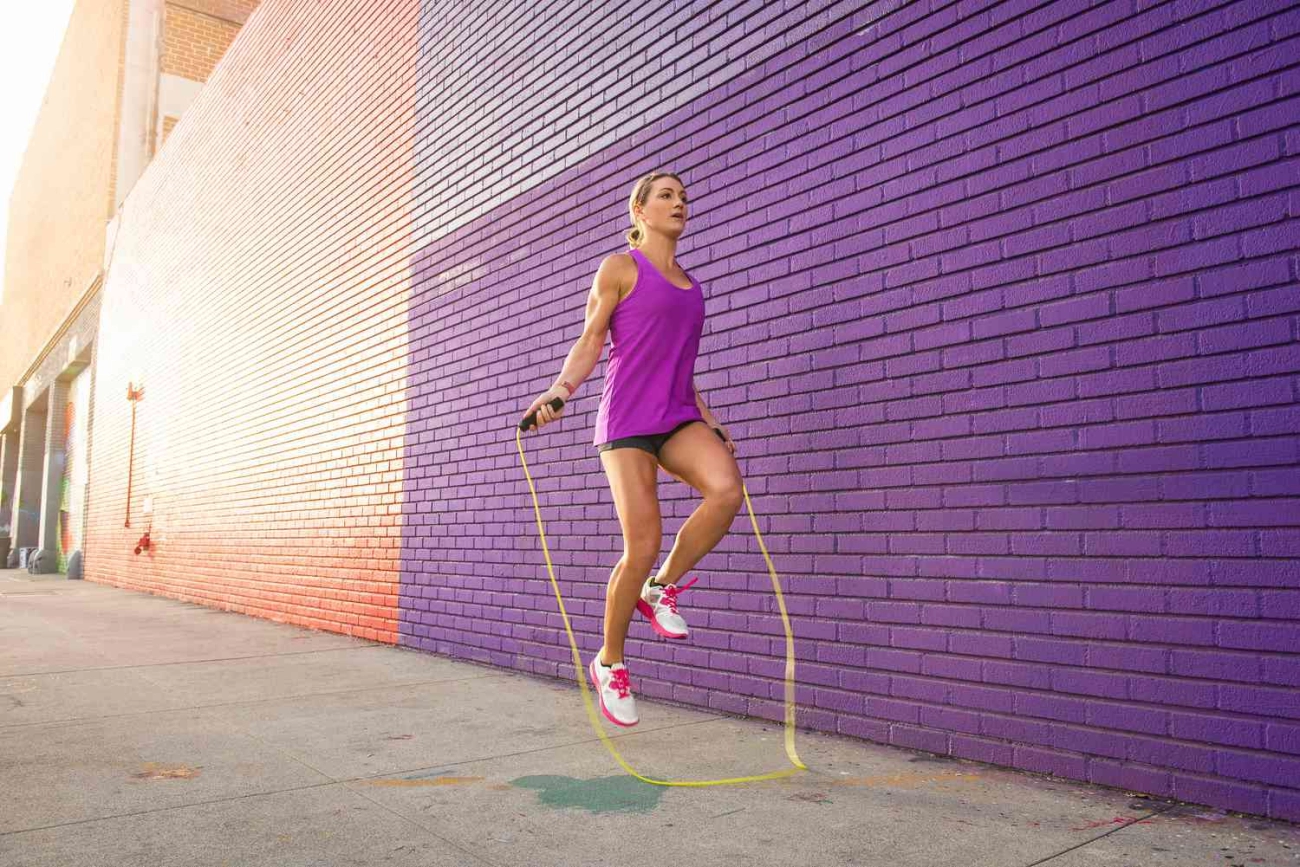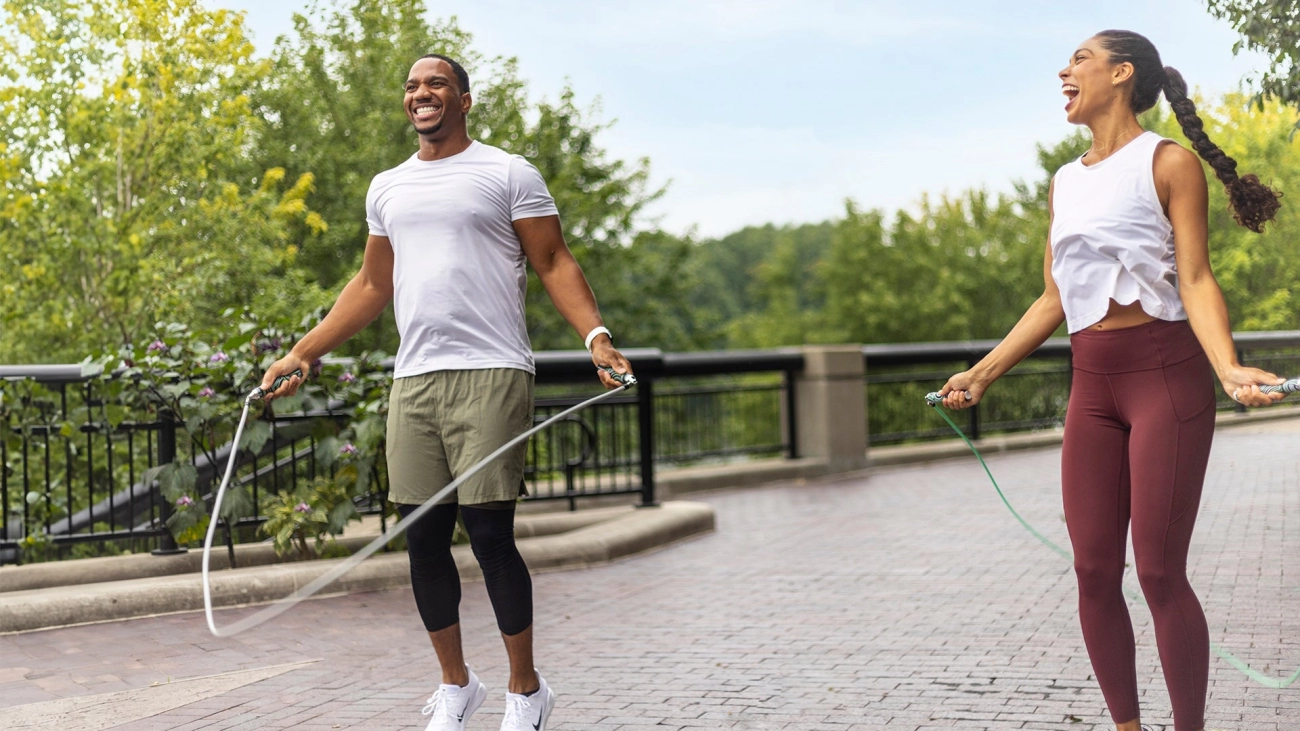Rope Skipping and Jogging Basics and Techniques
If you’re wondering how to get started with rope skipping and jogging, it helps to know the basics, equipment to use, and common mistakes to avoid. Both are excellent cardio workouts, but they require some technique for the best results and safety.
What is Rope Skipping and Types of Skipping Ropes
Rope skipping, or jump rope, involves jumping over a swinging rope using a steady rhythm. It’s a simple yet effective cardio exercise that improves coordination, agility, and endurance. There are several types of skipping ropes to choose from:
- PVC ropes – lightweight and great for speed training
- Beaded ropes – durable with good feedback, perfect for beginners
- Weighted ropes – add resistance to build strength
- Cordless ropes – simulate skipping without a real rope, ideal for small spaces
The basic technique consists of:
- Keeping your elbows close to your body
- Turning the rope with your wrists (not arms)
- Jumping just high enough to clear the rope
- Maintaining a steady, smooth rhythm
Start slow to master timing and avoid tripping.
What is Jogging Pace Terrain and Form
Jogging is a moderate-intensity cardio exercise involving running at a comfortable, steady pace. Your ideal jogging pace is usually 50-70% of your maximum heart rate — fast enough to improve fitness but sustainable for longer distances.
Consider these key form tips:
- Keep your chest up and shoulders relaxed
- Lean slightly forward from your ankles, not your waist
- Land softly on the midfoot to reduce impact
- Maintain a cadence of about 160-180 steps per minute
- Use varied terrain like trails, tracks, or pavement for balance and strength
Equipment Needed for Rope Skipping and Jogging
For rope skipping:
- A quality skipping rope suited to your height and skill level
- Supportive, non-slip workout shoes
- Comfortable, breathable clothing
For jogging:
- Good running shoes matched to your foot type
- Weather-appropriate workout gear
- Optional accessories: fitness tracker, hydration belt
Safety Tips and Common Mistakes for Both
Staying safe with jumping rope and jogging is crucial to avoid injury and keep consistent gains.
Safety tips for rope skipping:
- Warm up joints and muscles first
- Use appropriate surface like wood, rubber mats, or grass to absorb impact
- Avoid skipping on concrete or hard surfaces
- Stop immediately if you feel sharp pain or dizziness
Rope skipping common mistakes:
- Jumping too high or too low
- Using arms instead of wrists to turn the rope
- Poor posture with bent knees or hunched shoulders
Safety tips for jogging:
- Start with short distances and gradually increase intensity
- Warm up and cool down properly
- Stay hydrated and dress for the weather
- Run in safe, well-lit areas
Jogging common mistakes:
- Overstriding, landing on the heel
- Poor posture causing back or joint pain
- Ignoring signs of fatigue or injury
By mastering the basics and using the right equipment, you’ll set the stage for effective and injury-free rope skipping and jogging workouts.
Physical Benefits of Rope Skipping and Jogging

Both rope skipping and jogging are excellent cardio exercises that boost your overall fitness, but they each offer unique physical benefits that can help you reach your health goals.
Cardiovascular Endurance Improvements
Regular skipping rope and jogging sessions improve your cardiovascular endurance by strengthening your heart and lungs. Both exercises increase your heart rate efficiently, enhancing oxygen delivery throughout your body. Skipping rope often raises your heart rate faster due to its higher intensity, making it great for quick cardio bursts. Jogging, on the other hand, is excellent for building steady stamina over longer periods.
Muscle Groups Targeted Skipping vs Jogging
- Rope skipping actively engages your calves, quads, hamstrings, glutes, and core muscles thanks to the repetitive jumping motion. Your arms and shoulders also get a workout from turning the rope, improving upper-body strength.
- Jogging mainly targets the lower body muscles such as the calves, quads, hamstrings, and glutes as well. It also engages stabilizing muscles like your hip flexors and core but puts less strain on your upper body.
Impact on Bone Density and Joint Health
Rope skipping is a higher-impact exercise that promotes bone density by applying controlled stress on your bones, which can help prevent osteoporosis. Jogging also supports bone health but, depending on terrain and intensity, may place more repetitive stress on your joints. Therefore, skipping rope is often preferred for strengthening bones while jogging is considered a solid low to moderate impact option.
Calorie Burn Comparison for Different Durations and Intensities
- Rope skipping burns around 10-16 calories per minute depending on your speed and style. This means a 15-minute skipping session can quickly torch calories.
- Jogging typically burns about 8-12 calories per minute, varying with pace and body weight.
For those with limited time, skipping rope offers higher calorie burn in less time. Jogging shines with sustained calorie burn during longer workouts.
Effects on Balance Coordination and Agility Rope Skipping Advantage
One big plus of rope skipping is its strong effect on balance, coordination, and agility. The timing and rhythm required help sharpen neuromuscular control better than jogging alone. This makes skipping rope an excellent cross-training tool for improving your overall athleticism.
Mental Health Benefits Stress Relief and Mood Improvement
Both jogging and rope skipping help reduce stress by releasing endorphins, your body’s natural feel-good chemicals. They improve mood, reduce anxiety, and support better sleep. Skipping rope’s rhythmic pace and focus can also be meditative, helping clear your mind. Jogging outdoors gets you fresh air and nature exposure, which has additional mental health perks.
choosing between rope skipping and jogging can depend on your fitness goals and preferences, but both offer powerful physical and mental benefits that contribute to a healthier, more active lifestyle.
Rope Skipping vs Jogging Which is Better for Your Goals

When deciding between rope skipping and jogging, it really depends on what you want to achieve. Both are solid cardio workouts, but they target your fitness goals in different ways.
Weight Loss and Fat Burning
Both activities help burn calories and support weight loss, but rope skipping generally burns more calories in less time. For example, skipping rope can burn around 10-15 calories per minute depending on intensity, while jogging burns roughly 8-12 calories per minute. If you’re short on time and want efficient fat burning, skipping might be your go-to.
Building Stamina and Endurance
Jogging is great for building steady-state endurance, as it keeps your heart rate moderate for extended periods. This helps your aerobic capacity grow over time. Rope skipping, on the other hand, offers interval-style cardiovascular workouts, which can boost stamina quickly but in shorter sessions.
Improving Coordination and Agility
One clear advantage of rope skipping is its positive impact on coordination, balance, and agility. The rhythmic jumping and timing involved develop your motor skills better than jogging, which is a repetitive motion with less focus on footwork.
Time Efficiency and Convenience
If you have limited space or time, rope skipping is a compact exercise you can do almost anywhere—in your garage, at home, or even in a small park. Jogging needs more space and generally longer sessions to be as effective. Skipping also doubles as a great warm-up or high-intensity burst during your workout.
Injury Risk and Impact on Joints
Jogging can be tougher on your knees, hips, and ankles because of the repetitive pounding, especially on hard surfaces. Rope skipping’s impact varies with technique and surface choice but often is considered moderate impact. Proper form, shoes, and surface are crucial for both to reduce injury risk. For people with joint issues, low-impact options like jogging on soft trails or using a weighted skipping rope with controlled jumps help minimize strain.
of Key Points
| Factor | Rope Skipping | Jogging |
|---|---|---|
| Calories Burned | Higher per minute | Moderate |
| Endurance Building | Interval-style cardio | Steady-state cardio |
| Coordination Agility | High improvement | Moderate |
| Space and Time | Compact, quick sessions | Requires more time and space |
| Joint Impact | Moderate, depends on surface | Higher, especially on hard ground |
| Injury Risk | Lower with proper technique | Higher if overdone or on hard surfaces |
if your goal is quick calorie burn and better coordination, rope skipping edges out jogging. For long-distance stamina and easier on-the-go movement, jogging is excellent. Many find combining both ideal for balanced fitness and injury prevention.
Combining Rope Skipping and Jogging for Optimal Fitness
Mixing rope skipping and jogging is a smart way to get a well-rounded cardio workout. Alternating between the two can keep your sessions fresh, improve different muscle groups, and boost overall endurance.
How Alternating Skipping and Jogging Enhances Workouts
By switching between skipping rope and jogging, you target different aspects of fitness:
- Improves cardiovascular endurance more efficiently by varying intensity
- Enhances muscle balance: skipping works calves, forearms, and core; jogging emphasizes legs and hips
- Boosts coordination and agility thanks to the quick footwork in skipping
- Prevents workout boredom by constantly changing pace and movement patterns
- Reduces injury risk by lowering repetitive strain since these exercises impact joints differently
Sample Weekly Workout Plan
Here’s a simple way to blend skipping and jogging for steady progress:
| Day | Workout | Focus |
|---|---|---|
| Monday | 15 min jogging + 10 min rope skipping | Endurance + Coordination |
| Wednesday | Interval skipping (30 sec on, 30 sec rest x 10) + 20 min easy jog | Speed + Fat burning |
| Friday | 20 min steady jog + 15 min freestyle skipping | Stamina + agility |
| Saturday | Cross-training (cycling or swimming) | Active recovery |
| Sunday | Rest or light stretching | Recovery |
Adjust the time and intensity as you build stamina. This blend supports steady fat loss and improves overall aerobic capacity.
Benefits of Cross Training with Skipping and Jogging
Cross training with these two cardio exercises offers several advantages:
- Balanced muscle development reduces overuse injuries
- More effective calorie burn by engaging different muscles and movement types
- Increased mental engagement helps maintain consistency
- Improved joint health due to a mix of low-impact jogging and higher-impact skipping
- Better recovery because alternating activities allows some muscles to rest while others work
Best Practices for Recovery and Injury Prevention
When combining rope skipping and jogging, keep these safety tips in mind:
- Warm-up and cool down: Always start with 5-10 minutes of light cardio and stretching
- Alternate hard and easy days to prevent overtraining
- Use proper footwear: supportive running shoes for jogging and comfortable, cushioned surfaces for skipping
- Focus on form: avoid heel striking while jogging and keep wrists relaxed during skipping
- Listen to your body: take rest days or reduce intensity if you feel pain or excessive fatigue
Following these helps maintain consistency and reduces injury risk, ensuring you get the most from both exercises.
For equipment that suits your combined workout needs, check out our selection of jump ropes designed for durability and comfort. If you want to learn how many calories you can burn combining these exercises, visit our guide on calorie burn for skipping rope.
Choosing the Right Skipping Rope from JumpRopeWholesale for Your Fitness Goals

Picking the right skipping rope is essential to get the most out of your rope skipping workout routines. At JumpRopeWholesale, we offer a variety of high-quality ropes designed to fit different fitness levels, goals, and preferences.
Types of Skipping Ropes Available
-
Speed Ropes
Lightweight and thin ropes designed for fast rotations. Perfect for improving coordination, agility, and stamina. Ideal if you’re focused on cardio exercises that require quick footwork.
-
Weighted Ropes
These have added weight in the handles or rope itself. Great for building strength and muscle endurance while still giving you a solid cardio workout. Weighted ropes tone your arms and shoulders more than regular ropes.
-
Cordless Ropes
Ideal for tight spaces or beginners worried about tripping. These ropes help you focus on form and rhythm without the hassle of the actual rope hitting your feet. Great for working on technique and endurance.
How to Select the Right Rope Based on Your Fitness Goals and Skill Level
-
Beginners should start with a durable beaded or PVC rope that’s easy to control and slower to rotate. These ropes are more forgiving and help you get the basics down without frustration.
-
If you want speed and agility, go with a thin, lightweight speed rope. This is common among seasoned jumpers and athletes.
-
For strength and toning, weighted ropes are the way to go, especially if your focus includes upper body conditioning.
-
Consider your height: Make sure the rope length matches your height. A rope that is too short or too long can throw off your rhythm and increase injury risk.
Durability Material Quality and Customization Options
JumpRopeWholesale focuses on manufacturing durable ropes using high-quality materials like sturdy PVC, steel cables coated in protective plastic, and reinforced handles for long-lasting use. They also offer custom options such as:
- Personalized rope length and handle size
- Color and design variations to match your style
- OEM/ODM services for fitness brands or gyms looking for unique products
What Customers Say About JumpRopeWholesale
Many customers appreciate:
- The consistency in rope quality and smooth rotations that help maintain rhythm
- The variety of options suited for diverse workouts from beginner to pro level
- Responsive customer service and fast shipping across the U.S.
- Success stories where people improved weight loss, stamina, and coordination by switching to JumpRopeWholesale ropes
Choosing the right rope from JumpRopeWholesale not only boosts your rope skipping efficiency but also keeps you motivated with a rope that suits your workout style and fitness level.
Tips for Beginners Getting Started with Rope Skipping and Jogging

Starting a new workout routine like rope skipping and jogging can feel overwhelming, but with the right approach, it becomes manageable and enjoyable. Here’s a simple guide to help beginners ease into both exercises, track their progress, and set achievable goals.
Beginner Friendly Routines for Rope Skipping and Jogging
Rope Skipping:
- Start with short intervals: Try skipping for 30 seconds, then rest for 30 seconds. Repeat for 5 rounds.
- Focus on basic techniques: Use a lightweight or adjustable rope like those available at JumpRopeWholesale. This helps maintain good form.
- Gradually increase duration: Add 15-30 seconds each session as your coordination improves. For beginner routines, check out our beginner skipping rope workout.
Jogging:
- Begin with a walk-jog method: Alternate 1 minute of jogging with 1-2 minutes of walking for a total of 20 minutes.
- Maintain an easy pace: Focus on keeping a conversational pace rather than sprinting.
- Use flat terrain: Choose smooth surfaces like tracks or sidewalks to avoid unnecessary strain.
How to Track Progress and Set Realistic Goals
- Use a journal or an app to log workout duration, pace, and how you feel each day.
- Set small goals such as skipping without tripping for one minute or jogging continuously for 10 minutes.
- Track your calorie burn and endurance improvements to stay motivated.
- Celebrate milestones but be patient; improvements come with consistent effort.
Motivational Tips to Stay Consistent
- Set a schedule: Work out at the same time daily to build a habit.
- Mix it up by combining skipping and jogging for variety and better results.
- Find a workout buddy or join a local group for accountability.
- Remind yourself of the benefits, such as better heart health, coordination, and stress relief.
- Use tools like a digital counter skipping rope to keep sessions engaging and measurable.
Starting with manageable routines and clear tracking helps avoid burnout and injuries, making it easier for beginners to enjoy the journey toward better fitness. For those needing equipment guidance, browse options like the adjustable skipping rope to get started.
Frequently Asked Questions about Rope Skipping and Jogging
Is Rope Skipping or Jogging Better for Beginners
Both rope skipping and jogging are great for beginners, but jogging tends to be easier to start with since it requires less coordination and equipment. Rope skipping can be a bit challenging at first because it involves timing and rhythm, but it’s an excellent choice once you build basic skills.
Key takeaway:
- Start with jogging if you want a straightforward, low-barrier cardio workout.
- Add rope skipping gradually to improve coordination and increase workout variety.
How Long Should I Skip Rope or Jog Daily
The optimal duration depends on your fitness level and goals but generally:
- Beginners: Start with 5 to 10 minutes of skipping or jogging per session.
- Intermediate: Aim for 20 to 30 minutes to build cardiovascular endurance.
- Advanced: 30 to 60 minutes can boost fat burn and stamina.
For rope skipping, break your session into intervals—like 1-minute skipping, 30 seconds rest—to avoid early fatigue. Jogging can be done at a steady pace for longer stretches.
Can Skipping Rope Replace Jogging Completely
Skipping rope and jogging both offer excellent cardio benefits, but skipping rope alone may not fully replace jogging because:
- Jogging offers continuous aerobic training with lower impact on coordination.
- Rope skipping is higher impact and improves agility and balance more effectively.
That said, if space or time is limited, rope skipping can be a compact, efficient alternative. Combining both tends to give the best overall fitness results.
How to Avoid Injuries in Both Exercises
To stay safe and avoid injuries while skipping rope or jogging:
- Warm up properly before starting.
- Wear supportive, well-fitting shoes designed for your activity.
- For rope skipping, maintain good posture and land softly on the balls of your feet.
- For jogging, keep a steady pace and avoid overstriding.
- Listen to your body; stop if you feel sharp pain or excessive fatigue.
- Gradually increase intensity and duration—don’t push too hard too soon.
- Include stretching and mobility work post-session.
Safety first means fewer setbacks and a more enjoyable fitness journey.



